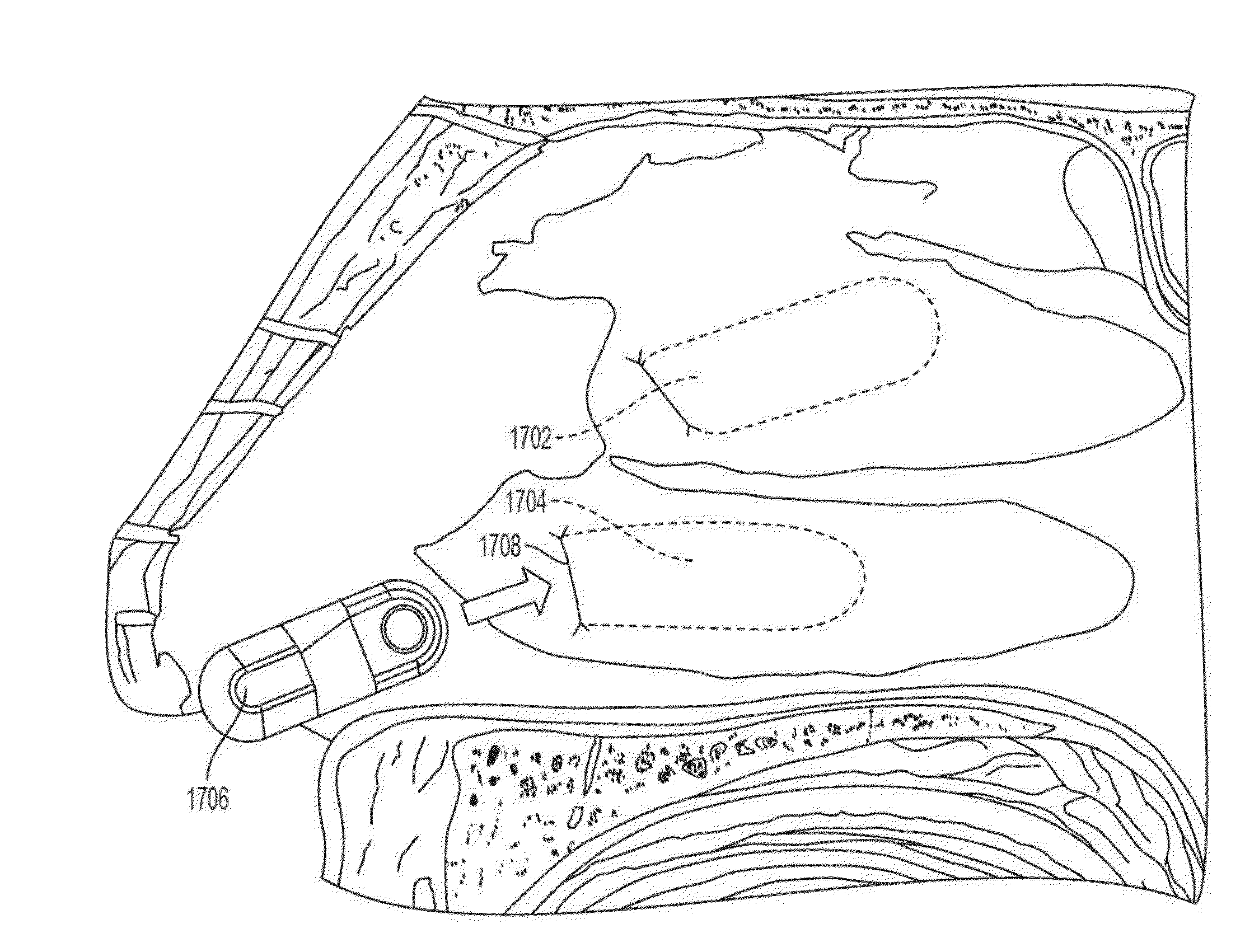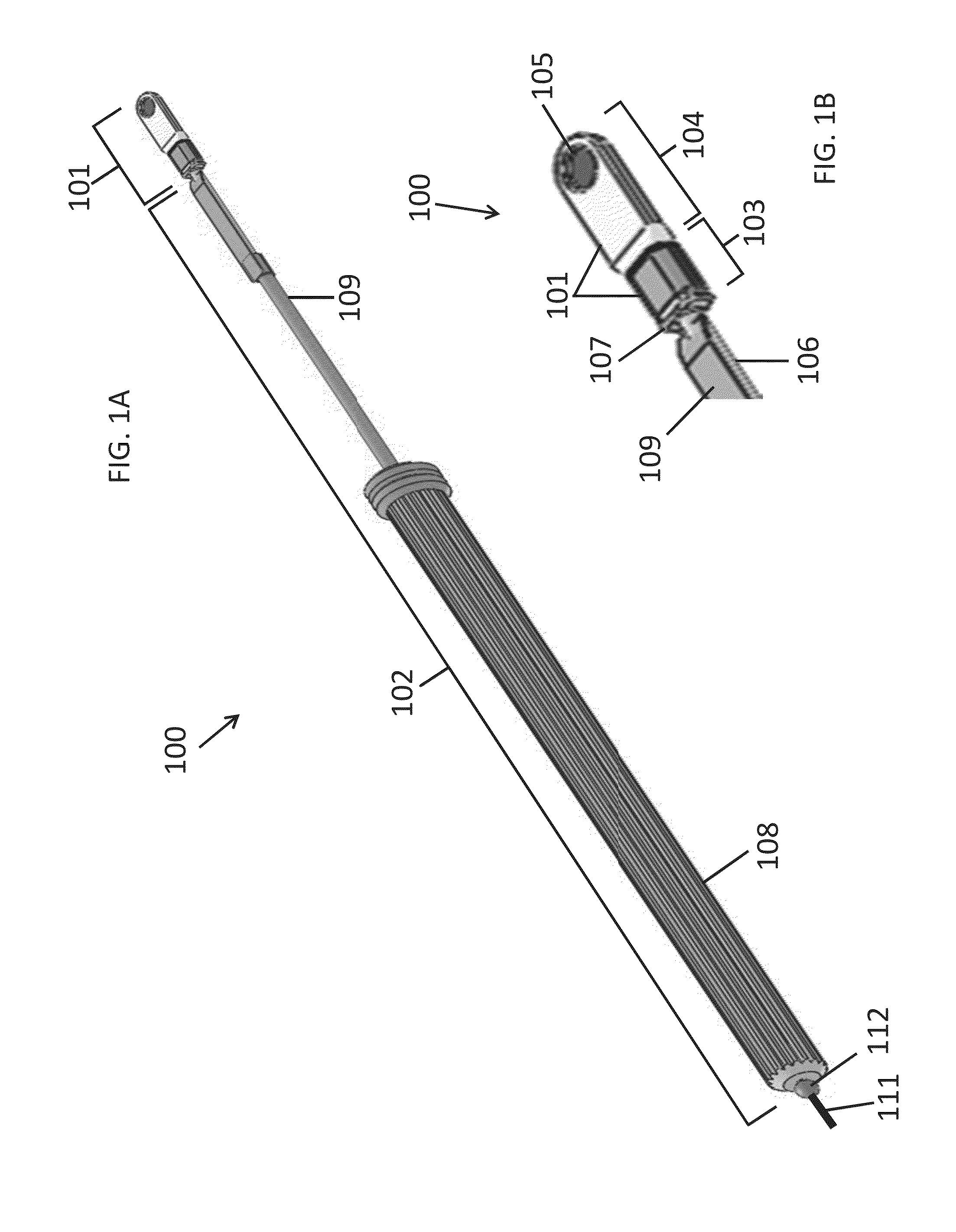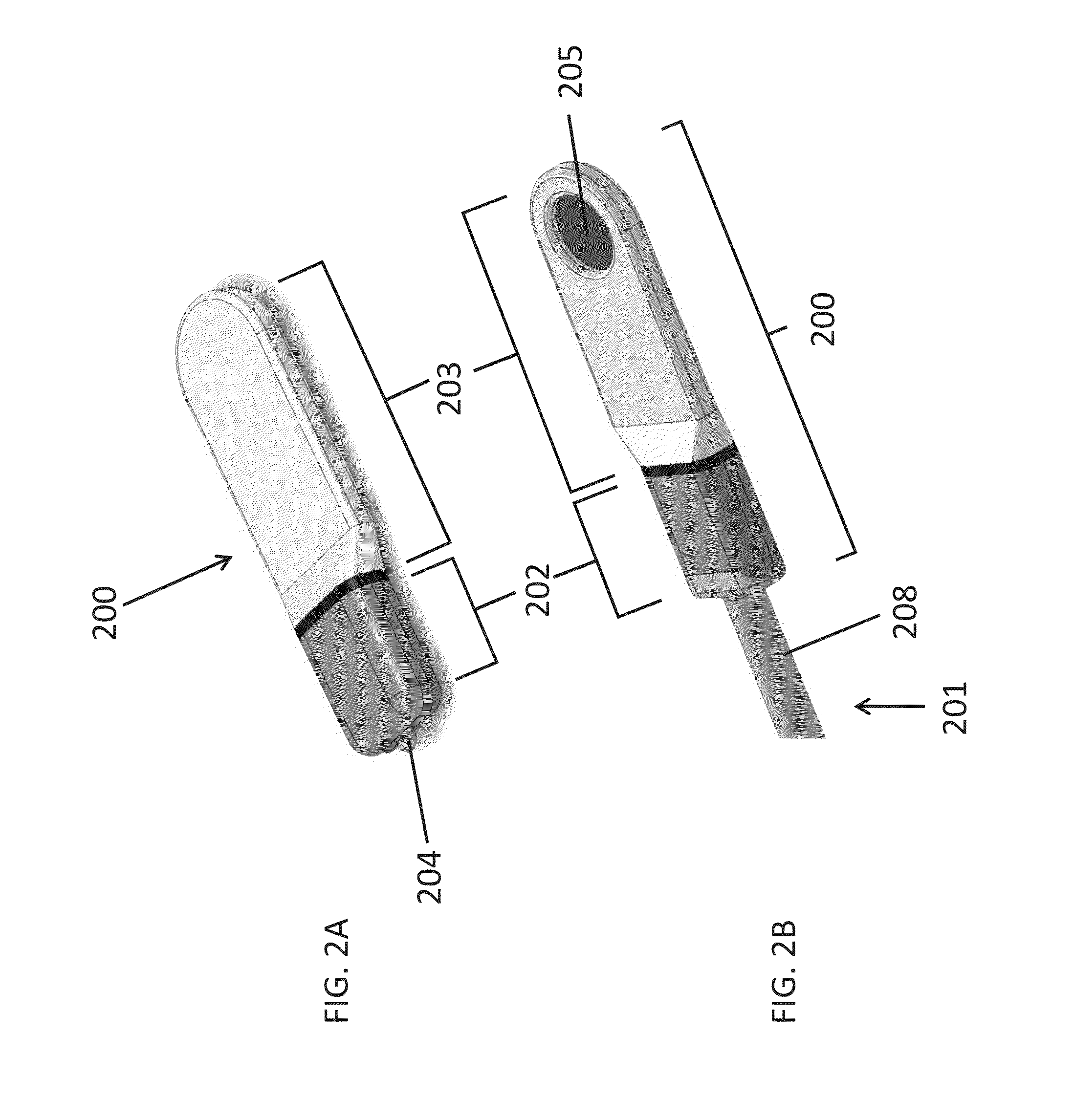Implantable nasal stimulator systems and methods
a technology of stimulator and nasal cavity, applied in the field of implantable nasal stimulator system and method, can solve the problems of ocular discomfort, visual disturbance, reduction of vision-related quality of life, etc., and achieve the effect of reducing the diameter of the lumen and preventing the obstruction of the view
- Summary
- Abstract
- Description
- Claims
- Application Information
AI Technical Summary
Benefits of technology
Problems solved by technology
Method used
Image
Examples
example # 1
Example #1
[0211]Two goats were implanted under sterile conditions with a microstimulator and stimulated at least once weekly for 33 days while collecting Schirmer score data to quantify tear production. A Schirmer score recorded in millimeters was determined by using Schirmer test strips, with a greater distance corresponding to greater tear production. The microstimulator implanted was similar to the microstimulator (200) of FIGS. 2A and 2B. The microstimulator was composed primarily of medical grade silicone, titanium (CP Grade 2), and titanium nitride-coated titanium. The microstimulator dimensions were approximately 17 mm×5 mm×2 mm (L×W×H) and the approximate total surface area was 190 mm2. The microstimulator was placed into the left nasal cavity in both animals, below the submucosa of the nasal septum, in one animal on the cartilage and in the other animal on the bony part of the septum.
[0212]Using an electrical probe similar to the electrical probe (1100) of FIG. 11, the desi...
example # 2
Example #2
[0220]Four goats were each implanted with one functional microstimulator and four non-functional replica implants, all of which remained in place for a 49-day study period. An objective of the study was to determine the efficacy of electrical stimulation using a microstimulator operating at 1.2 mA. In addition, surgical tools and techniques for implantation and explantation were evaluated. The microstimulator implanted was similar to the microstimulator (200) of FIGS. 2A and 2B. The microstimulator was composed primarily of medical grade silicone, titanium (CP Grade 2), and titanium nitride-coated titanium. The microstimulator dimensions were approximately 17 mm×5 mm×2 mm (L×W×H) and the approximate total surface area was 190 mm2. The replica implants had approximately the same dimensions and surface area as the microstimulator, but they were composed entirely of silicone.
[0221]For each goat, the implantation site for the microstimulator was determined using an electrical ...
example # 3
Example #3
[0224]A human cadaver study was performed to evaluate surgical tools and techniques for implanting a microstimulator similar to the microstimulator (200) of FIGS. 2A and 2B. This study indicated that an implantation procedure similar to those described with respect to Examples #1 and #2 could be successfully performed on human anatomy. For example, a tissue pocket was formed adjacent to the nasal septum and the microstimulator was implanted using an implantation tool similar to the implantation tool (3000) of FIGS. 27A-27E. FIGS. 29A-29C are fluoroscopic images obtained during this procedure. FIG. 29A depicts the formation of a tissue pocket in the nasal cavity using a dissection tool with a blunt blade (3400). FIG. 29B shows a microstimulator (3402) attached to the distal end of an implantation tool (3404) as the microstimulator (3402) is inserted into the tissue pocket. FIG. 29C depicts the microstimulator (3402) implanted in the nasal tissue pocket after the implantatio...
PUM
 Login to View More
Login to View More Abstract
Description
Claims
Application Information
 Login to View More
Login to View More - R&D
- Intellectual Property
- Life Sciences
- Materials
- Tech Scout
- Unparalleled Data Quality
- Higher Quality Content
- 60% Fewer Hallucinations
Browse by: Latest US Patents, China's latest patents, Technical Efficacy Thesaurus, Application Domain, Technology Topic, Popular Technical Reports.
© 2025 PatSnap. All rights reserved.Legal|Privacy policy|Modern Slavery Act Transparency Statement|Sitemap|About US| Contact US: help@patsnap.com



